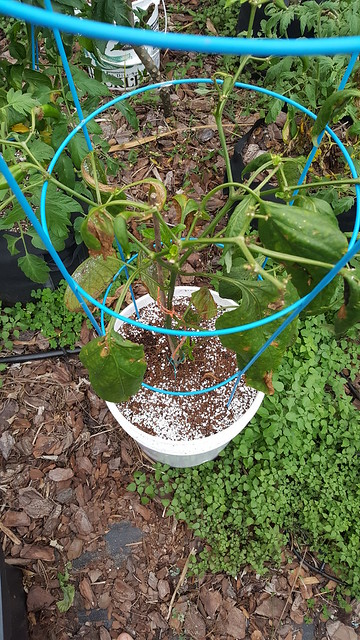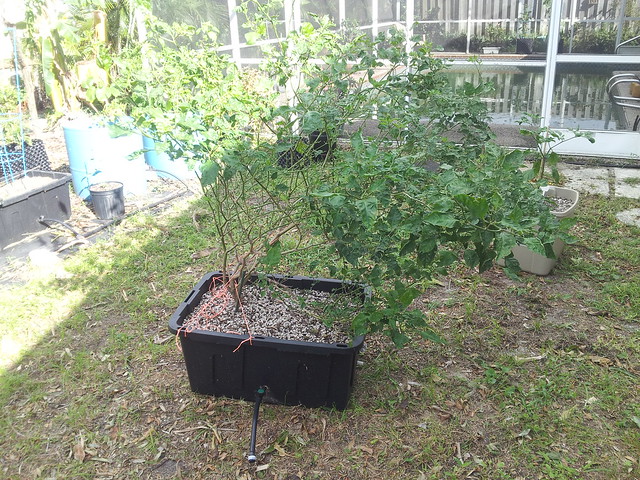Soil Biology and pH by Jeff Lowenfels
The success of the AeroGarden, the first plug-and-grow aeroponic kitchen appliance, is testament to the fact that ordinary people do not understand the concept of pH and don't want to deal with it in their growing situations. Make it so you can practice hydroponics without this chemistry barrier and they will come, apparently.
Frankly, the concept of pH also confuses soil gardeners. Heck, the definition of pH was inadvertently reversed in my book "Teaming With Microbes: A Gardener's Guide to the Soil Food Web." (Yes, some readers noticed; I received two "you made a mistake" notes. But that's not as many as I thought I'd receive.) Fortunately, the mistake was corrected in time for the second printing.
In any case, soil gardeners have been told certain plants require acidic conditions- for example, rhododendrons and azaleas- or else they won't grow. The solution advocated by most experienced gardeners is not dissimilar from what a hydroponics grower would do: adjust the pH with chemicals, such as agricultural lime, to make the soil more alkaline. To make alkaline soil more acid, we are told to add sulfur. Because they are chemical changes, these solutions work for a short time. But to me pH is a biological matter.
A bit of quick pH review is in order (if only to make amends for the mistake in my book). You may remember that pH is a measure of the acidity or alkalinity of a solution on a scale of 1 to 14; 1 being most acidic and 14 being most alkaline. A more technical description is that pH is the measurement of the concentration of hydrogen ions, H+. If you have lots of H+, the pH is low, or acidic. If you have few of them, the pH is high, or alkaline.
If you are adding fertilizers and using chemicals, you are stuck in the chemical realm. Organic gardeners, soil food webbies in particular, realize that pH has more to do with biology than it does with chemistry. That's because of the way plant roots take up nutrients. Root hair surfaces are covered with positive electrical hydrogen cations. Think of these charges as ping-pong balls. If soil particles are small enough, their surfaces are covered by these ping-pong ball charges, both positive (cation) charges and negative (anion) charges. These cations are not limited to hydrogen; they also include calcium, potassium, sodium, magnesium, iron, and ammonium. All are important plant nutrients.
When a root encounters a clay or organic particle, it can exchange one of its hydrogen cation for another positive one from the particle. It can choose from calcium, potassium, sodium, magnesium, iron, ammonium and hydrogen, as these are all cations carried by clay and silt and are all, as luck would have it, major plant nutrients.
This is known, incidentally, as cation exchange capacity, or CEC. Sand and silt have low CECs, because they comprised of particles that are too large to hold electrical charges. This is why humus and clay are needed to make soil good. They are extremely small particles and can carry cations.
So, back to pH. Every time a plant root exchanges a hydrogen ion for a nutrient ion, it increases the concentration of hydrogen ions in solution. Thus, the pH goes down and things should become more acidic.
Ah, but things usually balance out because the positive cations on the root surface also attract negative charges. Here, hydroxy ions (OH-) are the exchange ping-pong balls, and addition of hydroxy ions lowers the concentration of hydrogen ions in the solution, and pH goes up.
I know this still sounds like chemistry and not biology. However, each plant has an optimum pH requirement. What soil growers need to know (and hydroponics growers don't) is that the type of bacteria and fungi attracted to a plant's rhizosphere by the plant's exudates has a lot to do with setting this optimal pH. Bacteria produce a slime that raises the pH, and fungi produce acids that lower the pH. Since the plant is in control of the biology it attracts, in a natural system, it is the plant that determines the pH, and not some chemistry teacher.
So, while you may forget the chemistry of pH, at least remember there is a biological side. Do no harm to it, and you shouldn't have to worry much about pH when you grow plants in soil. Moreover, the nutrient exchanges that occur above also have a lot to do with what kind of bacteria and fungi are attracted to the root zone as some like higher pH and others lower pH.
The success of the AeroGarden, the first plug-and-grow aeroponic kitchen appliance, is testament to the fact that ordinary people do not understand the concept of pH and don't want to deal with it in their growing situations. Make it so you can practice hydroponics without this chemistry barrier and they will come, apparently.
Frankly, the concept of pH also confuses soil gardeners. Heck, the definition of pH was inadvertently reversed in my book "Teaming With Microbes: A Gardener's Guide to the Soil Food Web." (Yes, some readers noticed; I received two "you made a mistake" notes. But that's not as many as I thought I'd receive.) Fortunately, the mistake was corrected in time for the second printing.
In any case, soil gardeners have been told certain plants require acidic conditions- for example, rhododendrons and azaleas- or else they won't grow. The solution advocated by most experienced gardeners is not dissimilar from what a hydroponics grower would do: adjust the pH with chemicals, such as agricultural lime, to make the soil more alkaline. To make alkaline soil more acid, we are told to add sulfur. Because they are chemical changes, these solutions work for a short time. But to me pH is a biological matter.
A bit of quick pH review is in order (if only to make amends for the mistake in my book). You may remember that pH is a measure of the acidity or alkalinity of a solution on a scale of 1 to 14; 1 being most acidic and 14 being most alkaline. A more technical description is that pH is the measurement of the concentration of hydrogen ions, H+. If you have lots of H+, the pH is low, or acidic. If you have few of them, the pH is high, or alkaline.
If you are adding fertilizers and using chemicals, you are stuck in the chemical realm. Organic gardeners, soil food webbies in particular, realize that pH has more to do with biology than it does with chemistry. That's because of the way plant roots take up nutrients. Root hair surfaces are covered with positive electrical hydrogen cations. Think of these charges as ping-pong balls. If soil particles are small enough, their surfaces are covered by these ping-pong ball charges, both positive (cation) charges and negative (anion) charges. These cations are not limited to hydrogen; they also include calcium, potassium, sodium, magnesium, iron, and ammonium. All are important plant nutrients.
When a root encounters a clay or organic particle, it can exchange one of its hydrogen cation for another positive one from the particle. It can choose from calcium, potassium, sodium, magnesium, iron, ammonium and hydrogen, as these are all cations carried by clay and silt and are all, as luck would have it, major plant nutrients.
This is known, incidentally, as cation exchange capacity, or CEC. Sand and silt have low CECs, because they comprised of particles that are too large to hold electrical charges. This is why humus and clay are needed to make soil good. They are extremely small particles and can carry cations.
So, back to pH. Every time a plant root exchanges a hydrogen ion for a nutrient ion, it increases the concentration of hydrogen ions in solution. Thus, the pH goes down and things should become more acidic.
Ah, but things usually balance out because the positive cations on the root surface also attract negative charges. Here, hydroxy ions (OH-) are the exchange ping-pong balls, and addition of hydroxy ions lowers the concentration of hydrogen ions in the solution, and pH goes up.
I know this still sounds like chemistry and not biology. However, each plant has an optimum pH requirement. What soil growers need to know (and hydroponics growers don't) is that the type of bacteria and fungi attracted to a plant's rhizosphere by the plant's exudates has a lot to do with setting this optimal pH. Bacteria produce a slime that raises the pH, and fungi produce acids that lower the pH. Since the plant is in control of the biology it attracts, in a natural system, it is the plant that determines the pH, and not some chemistry teacher.
So, while you may forget the chemistry of pH, at least remember there is a biological side. Do no harm to it, and you shouldn't have to worry much about pH when you grow plants in soil. Moreover, the nutrient exchanges that occur above also have a lot to do with what kind of bacteria and fungi are attracted to the root zone as some like higher pH and others lower pH.



